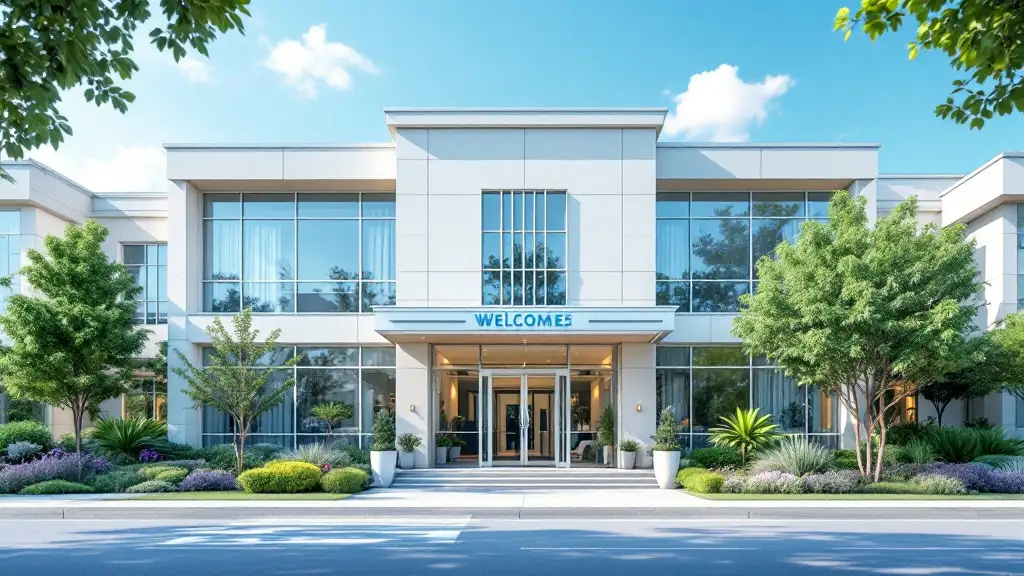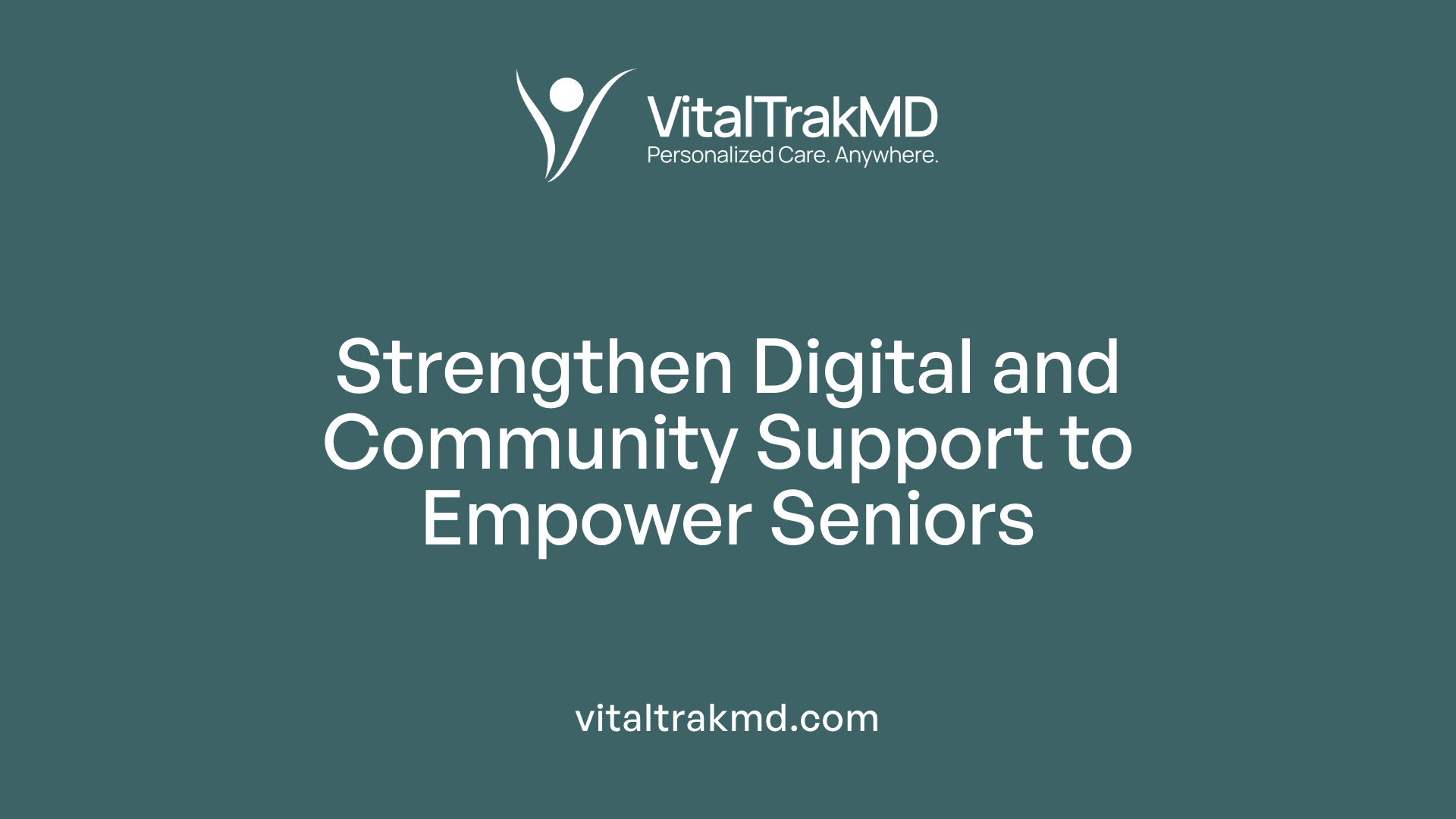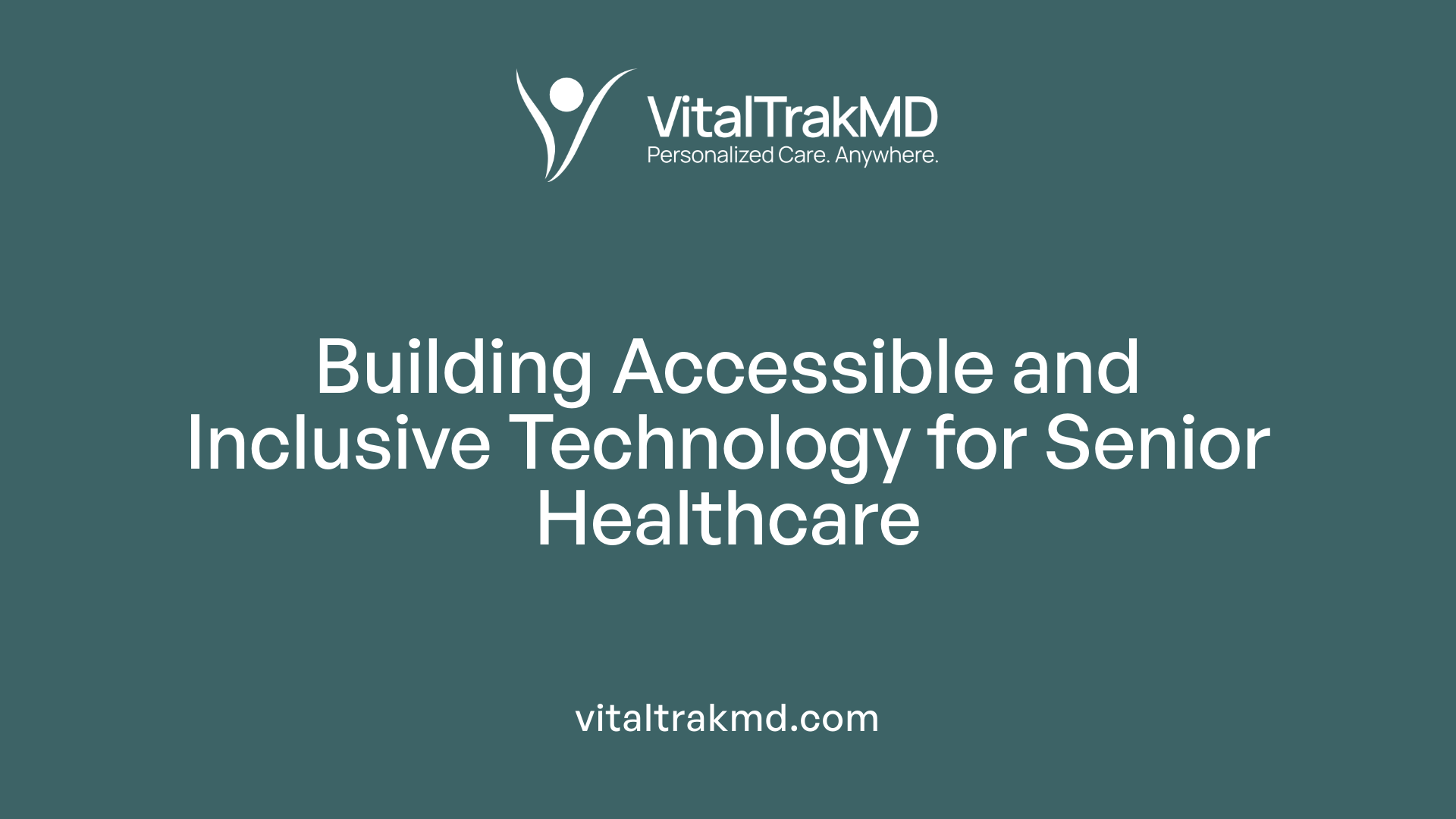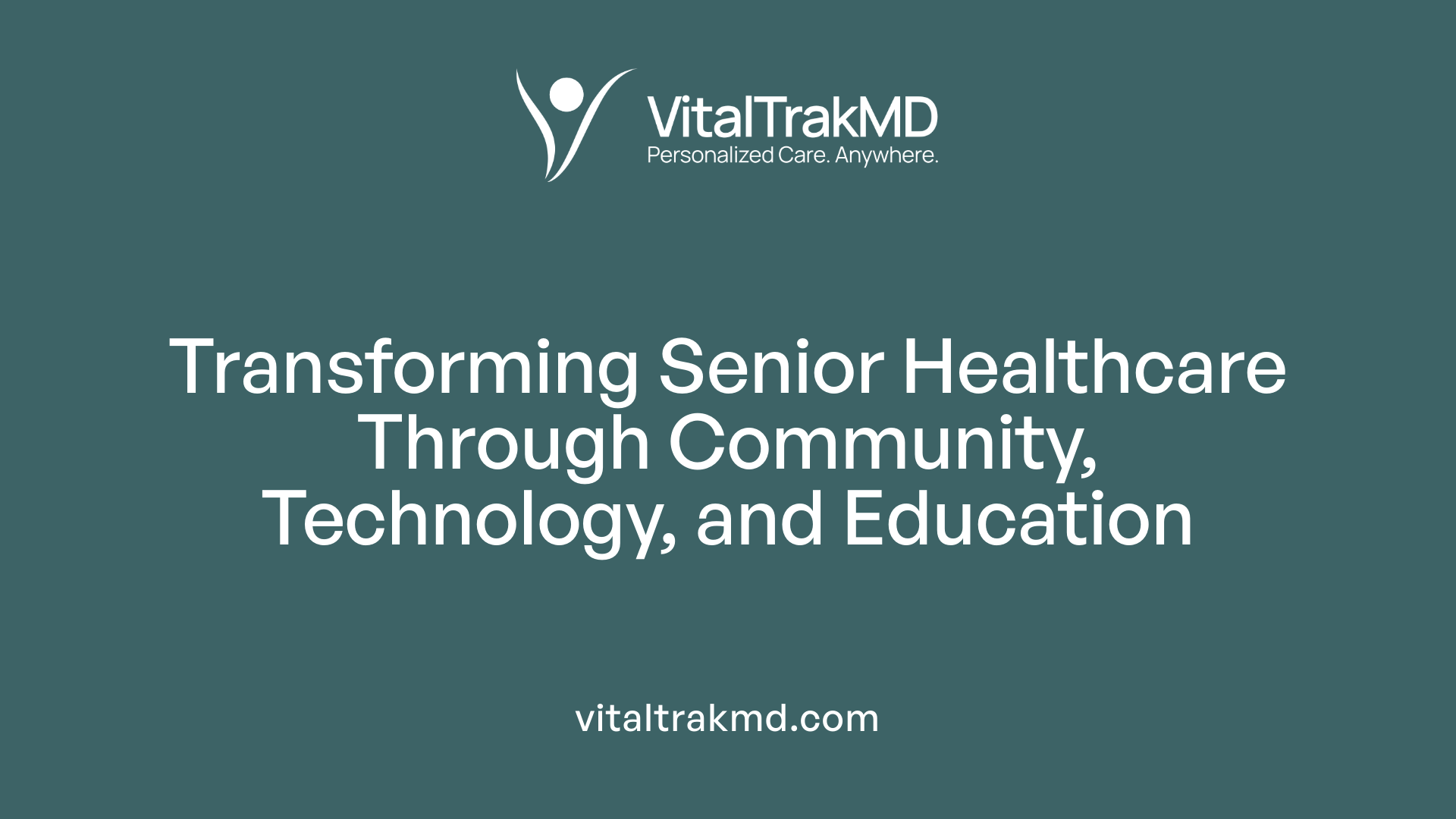How Seniors Can Successfully Enroll in Hybrid Healthcare Programs

Empowering Seniors Through Innovative Healthcare Solutions
As healthcare continues to evolve, hybrid healthcare programs—combining in-person and virtual care—are emerging as vital for supporting the aging population. These models improve access, enhance care coordination, and foster patient-centered approaches. Understanding how seniors can successfully enroll in these innovative programs is essential for healthcare providers, caregivers, and seniors themselves. This article explores the process, eligibility, and tools necessary to navigate hybrid healthcare enrollment effectively, emphasizing strategies and resources that support senior participation and engagement.
Enhancing Technological Infrastructure and Community Engagement

Expanding digital infrastructure at senior centers
Investment in technological upgrades at senior centers is vital for supporting hybrid programming. The federal government's American Rescue Plan Act, through the Executive Office of Aging and Independence, funds initiatives aimed at improving Wi-Fi networks, installing high-quality cameras, and equipping centers with necessary hardware. These improvements enable senior centers to host virtual classes, cultural events, and informational sessions, making activities accessible to a broader audience.
Partnerships with community organizations like YMCA and tech support groups
Collaborations with organizations such as the YMCA help expand the range of programming available through hybrid methods. These partnerships facilitate virtual fitness classes, educational talks about scams and fraud, and community discussions. Tech support groups, like the Boston Networks user group composed of retired IT professionals, provide essential technical assistance, helping seniors build digital literacy. Such partnerships strengthen the community fabric and improve access to technology support.
Intergenerational collaboration to improve digital literacy
Building bridges between generations fosters mutual learning and enhances digital literacy among seniors. Youth programs and digital support initiatives encourage young volunteers to assist seniors with using devices, navigating platforms, and troubleshooting issues. This intergenerational approach not only boosts seniors' confidence with technology but also creates meaningful connections, transforming senior centers into lively community hubs.
| Initiative | Focus Area | Key Benefits |
|---|---|---|
| Infrastructure upgrades | Hardware, internet, camera systems | Better virtual event quality and accessibility |
| Community organization partnerships | Program development, tech support, outreach | Increased program variety and tech assistance |
| Intergenerational programs | Digital literacy, mutual learning | Enhanced skills, stronger community bonds |
Support tools and resources for seniors in hybrid health services
Several tools and resources are available to assist seniors in accessing hybrid health services. User-friendly online portals and telehealth platforms focus on simplicity and ease of use. Devices such as tablets pre-loaded with selected apps and connectivity boosts through local programs help bridge the digital divide. Educational materials, including step-by-step guides with visuals and video tutorials, prepare older adults for virtual visits.
Dedicated staff or volunteers often assist seniors during their initial telehealth appointments, reducing anxiety and technical obstacles. Family members and caregivers also play a crucial supportive role. As technology evolves, innovations like AI and senior-friendly interfaces continue to make virtual health services more accessible, ensuring that older adults can participate fully in hybrid healthcare models.
In conclusion, expanding technological infrastructure, strengthening community partnerships, and fostering intergenerational support are essential strategies to enhance digital access and literacy, ultimately improving health and social engagement for seniors.
Developing Age-Friendly and Inclusive Healthcare Models

What technological and educational needs should be addressed to facilitate senior participation in hybrid healthcare?
Ensuring that seniors can effectively participate in hybrid healthcare models requires careful attention to both technology and education. First, developing accessible virtual health platforms is crucial. These platforms should be user-friendly, with simple interfaces that accommodate cognitive and sensory impairments common among older adults.
Reliable internet connectivity and technical infrastructure are also essential. Without a stable connection, participation in virtual appointments becomes frustrating and inconsistent. Therefore, healthcare systems must invest in high-quality internet access and technical support that can quickly resolve issues.
Educational programs tailored for seniors play a vital role in fostering digital literacy. These programs should address diverse abilities, offering step-by-step guides, visual aids, and hands-on practice sessions. For example, video tutorials and in-person workshops can help seniors learn how to operate telehealth devices confidently.
Ongoing technical assistance is key to reducing frustration. Real-time support, such as help lines or dedicated staff for troubleshooting, ensures seniors feel supported throughout their digital health journey. Additionally, policies should focus on bridging the digital divide by providing necessary devices or internet subsidies to marginalized groups.
In essence, creating adaptable, inclusive, and trust-building hybrid models can significantly improve health engagement and outcomes for seniors. By addressing both technological and educational barriers, the healthcare system can foster greater autonomy, community involvement, and better health maintenance among older adults.
Implementing and Optimizing Hybrid Care Delivery Models

What innovative healthcare delivery models support senior participation, such as virtual home visits and integrated care?
Innovative approaches are transforming healthcare for seniors by blending virtual and in-person services. Virtual home visits, where clinicians connect with patients via secure video links, allow seniors to access medical support without leaving home. This is especially beneficial for those with mobility challenges or those living in rural areas.
Integrated care systems bring together different healthcare providers—such as doctors, mental health specialists, and social workers—to deliver coordinated, comprehensive support tailored to individual needs. These multidisciplinary teams focus on the whole person, addressing physical health, mental well-being, and social factors.
Technology plays a vital role, with remote monitoring devices like wearable health trackers and smart home sensors providing real-time data. These tools help detect issues early, enhance safety, and promote independence.
Furthermore, personalized resources support social and mental health, including culturally sensitive services, memory apps, and virtual reality experiences. Caregiver resources, such as online training modules and respite options, empower families to participate actively in ongoing care.
The combined use of these models ensures seniors can maintain their health and connection to the community, even when traditional in-person visits are limited.
Supporting Enrollment Through Education, Communication, and Trust Building

How can seniors enroll in hybrid healthcare programs?
Seniors interested in joining hybrid healthcare programs should start by understanding the eligibility criteria set by each program. These typically include age requirements, health status, and the ability to utilize digital tools. Consulting with healthcare providers, senior centers, or program coordinators helps gather detailed enrollment information.
Many government-supported initiatives, like those funded by the American Rescue Plan Act, partner with local organizations to expand access. These programs often promote digital literacy and provide technical support through volunteers, including retired IT professionals and youth tech groups.
Enrollment generally involves completing an application either online or in person. Applicants might also need to attend orientation sessions or assessments to ensure they are prepared to participate effectively in virtual components. Assistance from community organizations makes this process smoother and more accessible.
What support options are available to help seniors successfully enroll and stay engaged in hybrid healthcare programs?
To support seniors, programs offer comprehensive education on how to navigate digital platforms and what to expect from virtual visits. Dedicated help lines and technical support teams help troubleshoot issues and build seniors' confidence in using telehealth services.
Community outreach programs focus on improving digital literacy and providing access to necessary devices and internet services, especially in rural or underserved areas. Family members and caregivers also play a crucial role, offering encouragement and assistance to their loved ones.
Designing user-friendly interfaces and secure systems tailored for seniors enhances their comfort and engagement. These measures ensure that older adults not only enroll successfully but also remain active participants in hybrid care, benefiting from the convenience and expanded access it provides.
| Support Measure | Description | Additional Details |
|---|---|---|
| Step-by-step guides and tutorials | Visual aids, videos, and written instructions | Help seniors understand technology usage |
| Dedicated helpline | Technical support for real-time assistance | Resolves technical issues quickly |
| Digital literacy programs | Training sessions and workshops | Improves confidence with digital tools |
| Community partnerships | Local organizations and volunteers | Provide device access and internet support |
| Caregiver involvement | Family and caregivers support | Reinforces engagement and comfort |
With these combined efforts, seniors can experience a seamless transition into hybrid healthcare, ensuring they benefit from both in-person and virtual services efficiently.
Conclusion: Embracing the Future of Senior Healthcare

What are the main strategies to successfully implement hybrid healthcare programs for seniors?
Implementing hybrid healthcare effectively involves multiple coordinated steps. First, healthcare providers should identify which types of appointments are suitable for virtual visits, such as routine follow-ups or chronic condition management. Clear communication and patient education play crucial roles; providing step-by-step guides with visual aids and practice sessions help seniors become comfortable with telehealth technology.
Community collaboration is essential. Partnering with local organizations, tech support groups, and volunteer IT professionals helps bridge the digital divide and enhances digital literacy. Emphasizing consistent processes for both virtual and in-person encounters ensures patient comfort and trust.
Integrating electronic medical records that support hybrid care enhances efficiency and reduces errors. For senior centers, improving technological infrastructure—like optimizing camera setups during site visits—ensures high-quality virtual participation and broadens access.
Encouraging proactive enrollment involves addressing barriers such as internet access and providing necessary devices or data plans where needed. Tailoring programs to meet individual preferences and capabilities increases participation and satisfaction.
Why are community, technology, and education vital in this transformation?
Community involvement drives the success of hybrid healthcare by fostering trust and support networks. Initiatives like partnerships with local youth and senior tech groups foster mutual learning, boost digital literacy, and ensure programs stay responsive to community needs.
Technology acts as the backbone, enabling remote monitoring, virtual visits, and integrated health records. Investments in digital infrastructure and user-friendly platforms make healthcare more accessible, especially in rural or underserved areas.
Education underpins the whole system. Informing seniors about how virtual visits work, their benefits, and how to use available tools reduces anxiety and improves engagement. Regular training, visual guides, and dedicated support staff help seniors navigate their healthcare options confidently.
How can we encourage seniors to enroll proactively?
Proactive enrollment requires removing obstacles and increasing awareness. Offering assistance with internet and device access ensures that seniors with limited resources can participate.
Providing personalized support through staff or volunteers who walk seniors through technology use ahead of scheduled visits helps build trust and familiarity.
Creating informative outreach campaigns that highlight the benefits of hybrid care—such as convenience, safety, and personalized attention—can motivate enrollment. Emphasizing how hybrid models support aging in place fosters confidence in these innovative approaches.
By fostering a community that values health, technology, and education, we can transform senior centers into vibrant hubs of engagement and health support. Encouraging seniors to embrace hybrid healthcare leads to improved health outcomes, greater independence, and enhanced quality of life.
| Strategies | Focus Areas | Details |
|---|---|---|
| Community Collaboration | Building trust and mutual support | Partnerships with local organizations, youth, and tech groups |
| Technology Infrastructure | Access and usability | Optimized camera setups, reliable internet, user-friendly platforms |
| Education & Support | Training and resources | Step-by-step guides, practice help, ongoing support |
| Outreach & Engagement | Awareness and motivation | Campaigns, personalized assistance, highlighting benefits |
Embracing these approaches ensures that senior healthcare continues evolving into a more inclusive, efficient, and satisfying experience for every senior.
Shaping Healthcare for the Golden Years
The future of senior healthcare lies in embracing hybrid models that prioritize accessibility, personalization, and technological integration. Successful enrollment requires coordinated efforts involving community partnerships, technological support, and clear communication. Equipping seniors with the right tools, education, and support mechanisms can dramatically improve engagement and health outcomes. As healthcare continues to evolve, proactive and informed approaches will ensure that seniors thrive in this digital age, enjoying independent, healthy, and connected lives.
References
- How Hybrid Programming is Transforming Senior Centers
- Setting a Solid Foundation for Hybrid Health Care Success
- Maximizing Resident Outcomes Through Integrated ...
- Implementation of a virtual and in-person hybrid hospital-at ...
- Preparing patients for hybrid care
- What Is Hybrid Healthcare? | Tools, Benefits, and Solutions
- The Future of Health Care Is Hybrid
- Healthcare's Future Is a Hybrid Model
- Comparing In-Person Only, Telemedicine Only, and Hybrid ...
- How Hybrid Programming is Transforming Senior Centers
Recent articles
Want to Feel Better and Live Healthier?
Join hundreds of patients taking control of their health with personalized care that fits their life – not the other way around.
Rated 4.8/5 by 32+ customers







